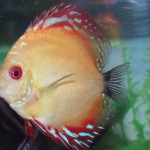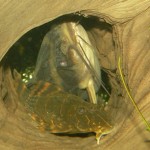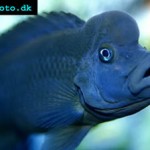Tropical Angelfish (Pteropyllum scalere) are probably the most popular of all fish to keep in an aquarium. They have a mild disposition, can handle varying degrees of water temperature, and can ingest a wide range of foods making them a great choice from the novus to the experienced aquarium owner.
Description
Unlike other cichlids, the tropical angelfish are flat bodied and have triangle shaped dorsal and anal fins. In the sea they often have black stripes in order to camouflage themselves. They will grow up to 8 inches in height and 4 inches in length. They are described as a “silver angel” but can also come in other colors such as golden, marble and black.
History and Location
Tropical angelfish were referred to around 1824 by Lichtenstein, and later were bred in captivity in the United States in the 1920s and 1930s. They originate from the Amazon River in South America.
Aquarium
Being able to withstand a wide range of water conditions, tropical angelfish like the temperature around 80F (27C). There’s a pecking order in more ways than one; smaller fish to the angelfish are seen as food and aggressive fish will nip at their fins. A few tanks may be needed as tropical angelfish grow. They can start out in a 10 gallon tank but when they get older they have to be moved to a 50 gallon tank. Breeding pairs must be separated off in 20 gallon tanks.
Diet
As tropical angelfish are omnivores they do well on a diet of frozen and live food and flakes. You can feed them a mix of white worms, blood worms, brine shrimp and small crustaceans. They are still able to thrive if not given live foods, such as dried tropical flakes. Make sure you don’t overfeed them because they don’t know how to say “when”.
Baby angelfish (fry) can be fed infusoria and rotifers after they are newly hatched. After a week they can be fed brine shrimp.
Breeding
Specific to tropical angelfish and not other types of cichlids, they select their own mate for breeding. The idea is to introduce about 6 juveniles into the tank and allow them to grow up together. Similar in appearance, the male and female lock their mouths and spin around and if they can endure this courting ritual then they will spawn together.
Diseases
By regularly maintaining your tank you can prevent the parasitic and bacterial diseases that angelfish are susceptible to. Some common diseases are fish TB, dropsy, popeye, cotton wool disease, hexamita, ich and white spot disease.
Topical angelfish are intelligent and one of the easier fish to keep in your aquarium if you follow some basic guidelines.
















